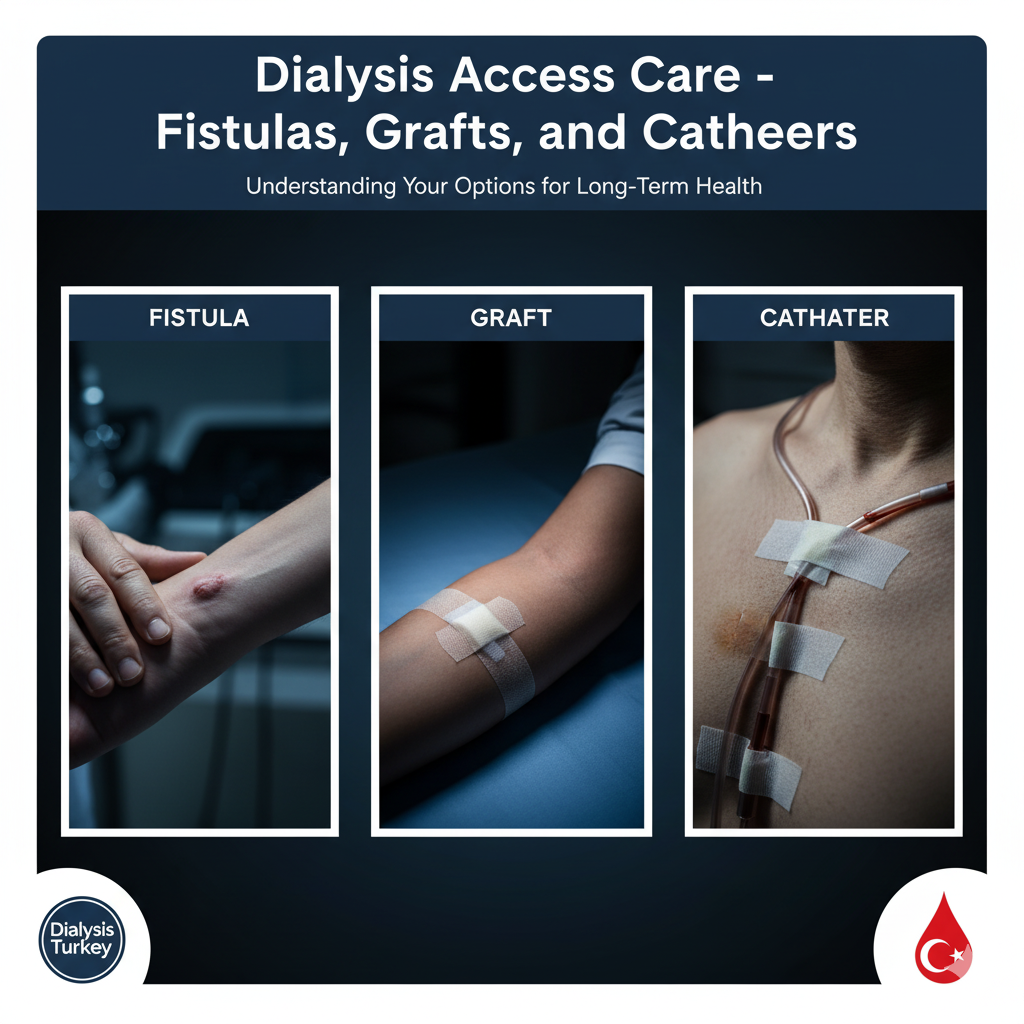Dialysis Access Care - Fistulas, Grafts, and Catheters
Your dialysis access is literally your lifeline, the means by which your blood can be cleaned during treatment. Proper access care is one of the most important aspects of successful dialysis. Understanding the different types of access, how to care for them, and recognizing potential problems can prevent complications and ensure reliable treatment. This article provides comprehensive guidance on maintaining healthy vascular access.
Types of Dialysis Access
There are three main types of vascular access for hemodialysis. An arteriovenous fistula is the preferred access, created by surgically connecting an artery to a vein, usually in the forearm. The increased blood flow causes the vein to enlarge and strengthen, making it suitable for repeated needle insertion. Fistulas typically last many years with proper care. An arteriovenous graft uses a synthetic tube to connect an artery to a vein when natural vessels are unsuitable. Grafts can be used sooner than fistulas but have a shorter lifespan. A catheter is a tube inserted into a large vein in the neck, chest, or groin, used for temporary access or when other options are not possible.
Fistula Care and Maintenance
Check your fistula daily by feeling for a thrill, the vibration or buzzing sensation indicating good blood flow. You should also hear a rushing sound, called a bruit, when listening with a stethoscope. Keep the access arm clean, washing gently with soap and water. Avoid wearing tight jewelry, watches, or clothing that restricts blood flow. Never allow blood pressure measurements, blood draws, or IV insertions in your access arm. Avoid sleeping on your access arm or carrying heavy bags with it. Do not scratch or pick at needle sites. Apply only gentle pressure after needle removal, never use tourniquets.
Graft Care
Graft care follows similar principles to fistula care. Check daily for a thrill and bruit. Protect the access from trauma and pressure. Keep the area clean and dry. Watch for signs of infection at the surgical site. Grafts are more prone to clotting than fistulas, so vigilant monitoring is essential. Report any changes in the thrill or bruit immediately. Grafts may require periodic monitoring with ultrasound to check for narrowing. Some grafts can last for years, while others may need revision or replacement sooner.
Catheter Care
Catheters require meticulous care to prevent infection. Never touch the catheter or connections with unclean hands. Keep the exit site clean and dry. Change the dressing according to your dialysis center's protocol, typically 2-3 times per week. Shower carefully, keeping the catheter and dressing dry with a waterproof cover. Never go swimming with a catheter. Inspect the exit site daily for redness, swelling, drainage, or tenderness. Keep the catheter secure to prevent pulling or dislodgement. Report fever, chills, or other signs of infection immediately. Follow instructions for flushing the catheter if applicable.
Recognizing Access Problems
Contact your dialysis center immediately if you notice:
• Loss or weakening of the thrill or bruit
• Redness, warmth, swelling, or tenderness at the access site
• Drainage, pus, or unusual odor from the site
• Excessive bleeding that does not stop with pressure
• Numbness, tingling, or coldness in the access arm
• Fever or chills, which may indicate infection
• Pain or cramping in the access arm that is new or worsening
Access Complications and Solutions
Common access complications include infection, thrombosis or blood clots, stenosis or narrowing of blood vessels, aneurysm or weakening of vessel walls, and steal syndrome where blood is diverted from the hand causing coldness and pain. Many complications can be treated if caught early. Infections may require antibiotics or catheter removal. Clots might be dissolved with medication or removed surgically. Stenosis can often be opened with angioplasty. Regular monitoring helps identify problems before they become serious. Your vascular surgeon works with your dialysis team to maintain optimal access function.
Exercise for Access Maturation
After fistula creation, exercises help the access mature by strengthening blood flow and enlarging the vein. Squeeze a soft ball or rolled washcloth in the access hand for 10-15 minutes, 3-4 times daily. Perform arm curls using light resistance. Raise the arm above heart level periodically to reduce swelling. Follow your surgeon's specific recommendations. Continue exercises even after the access is mature to maintain good blood flow. Stop exercising if you experience pain and consult your healthcare team.
Long-term Access Preservation
Protecting your access for the long term requires diligence and awareness. Rotate needle insertion sites to prevent scarring that can damage the vessel. Use proper needle technique, never digging or fishing for the vessel. Report difficult needling to your dialysis team promptly. Maintain good blood pressure control to protect vessel walls. Keep blood sugar controlled if diabetic to prevent vascular damage. Avoid smoking, which damages blood vessels and impairs healing. Stay well-hydrated within your fluid limits. Attend all scheduled appointments for access monitoring. Report any concerns immediately rather than waiting for your next treatment.

